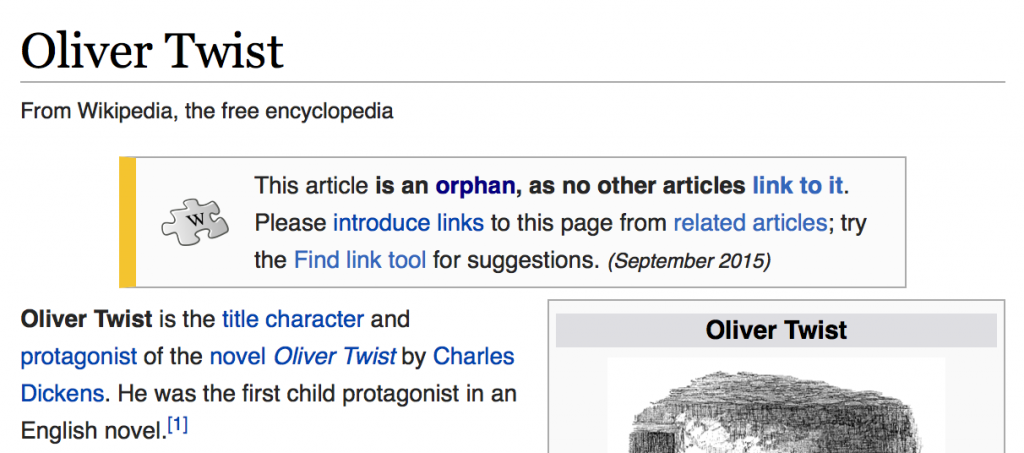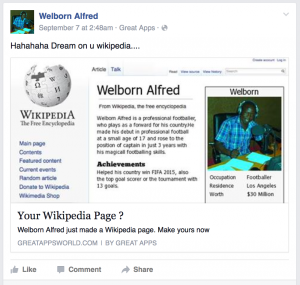Wiki orphans, directed graphs, and the clique
When a new editor creates an article on Wikipedia or other sites based on the MediaWiki model, they often find that their article is soon labeled as an “orphan” by the friendly neighborhood administrator or anyone watching the new article IRC feed. In much of these cases, the new article often fails the Wiki’s notability guidelines. The reasons for this are not a coincidence.
An orphan article is one that may link to other articles in the Wiki, but one that is not linked to by any other articles. This makes clear the directed nature of Wiki links and hyperlinks in general. It also reveals a correlation between orphan articles and the real life relationship between the article’s subject and the rest of the Wiki’s content — in the case of Wikipedia, the set of notable subjects. The more direct links there are to an article, the more notable and prominent it appears to be.
While some of this may seem obvious, the automatic label “orphan” provides a valuable tool that says more and more about an article as the network becomes large, and in the case of Wikis, more representative of the set it is trying to represent. As Wikipedia grows larger, the chances of an article already connected to the graph (non-orphans, presumably all notable) having links to other articles grow. If an article is an orphan in such a large graph, it can strongly suggest that the subject of the article is not notable, whereas if one created the Wikipedia article on “Pastrami” in 2001 when the site had only 10 articles, the article being an orphan would say very little about the topic “pastrami” itself. In 2015, however, one of the fastest ways a Wikipedia editor can clean up after a middle schooler writing an article on himself is to go through a list of orphan articles. The older such orphans are, the less likely it is that they meet Wikipedia’s notability guidelines.
Equivalently, however, the growth of Wiki networks also increases the chances of bridges forming between notable and non-notable articles. For example, David Gries’s grandniece may find his Wikipedia article, make an article about herself, and link to it from his article, connecting an otherwise non-notable article to the larger graph. This situation becomes more likely as it becomes easier to find a degree of separation between the notable and the non-notable as the set of the notable grows; before 2007, there would have been no article on David Gries and no way for his grandniece to (without vandalism) connect to the larger Wikipedia graph.
Directed graphs like Wiki sites add a layer of polarization to the systems; while non-directed networks like Facebook tend to create local systems (the upper limit being one person’s ability to reciprocate other connections made to it), directed networks like Wikipedia allow some articles to rise to superstar status because connections (links) can be made to them without the need for reciprocation, whereas it becomes more difficult for articles with no other articles linking to them to connect to the rest of the graph. This provides an easy tool for editors to weed out articles that do not belong, but in a similar theme, makes it easier for such articles to latch onto other articles at the edges of the node and remain undetected.
How Wikipedia Works: And How You Can be a Part of It


